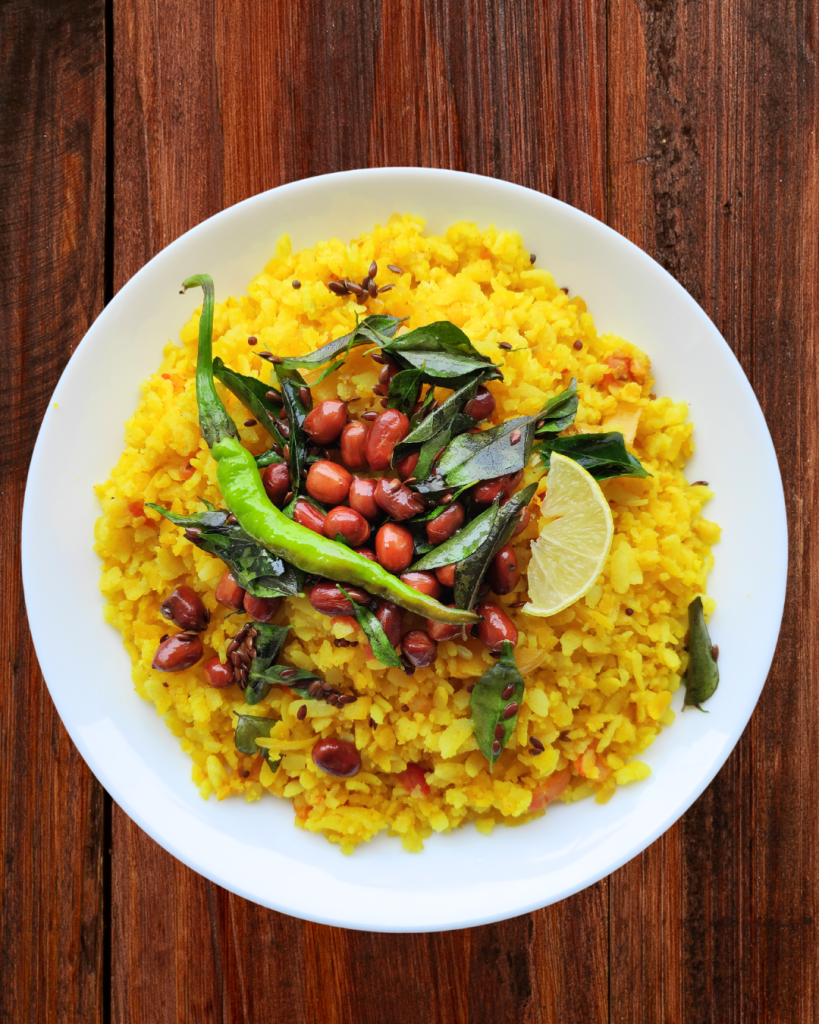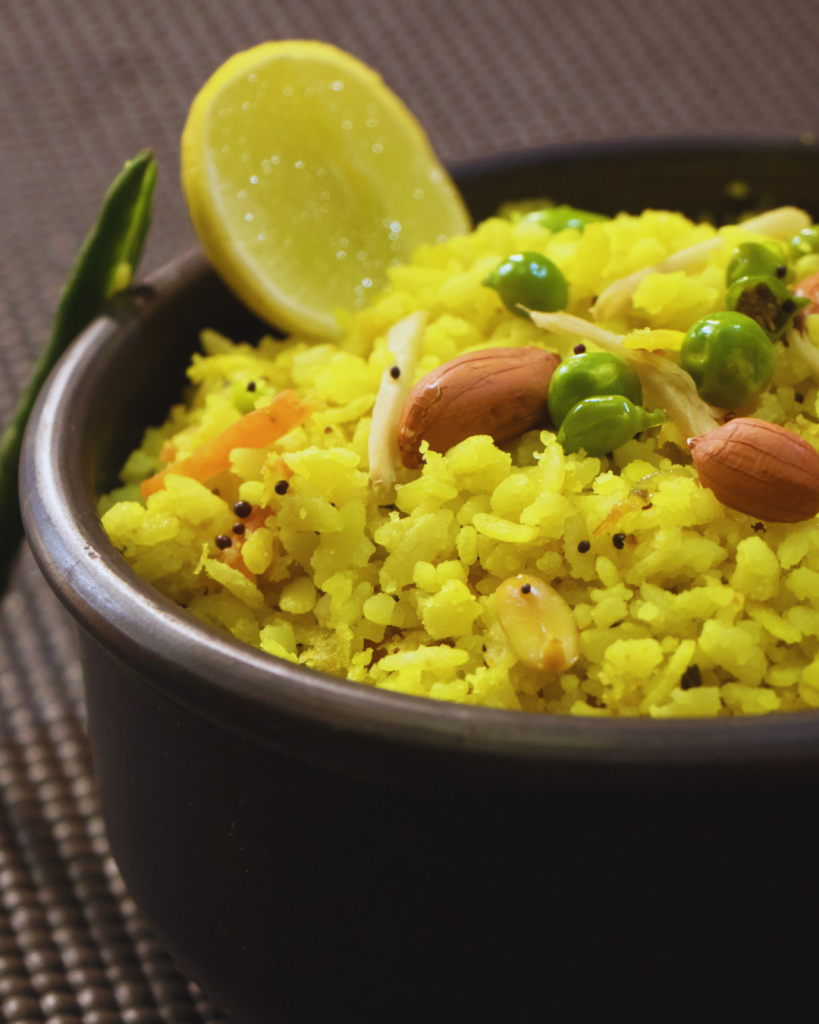Poha, a beloved dish made from flattened rice, is not only a staple in many Indian households but also a topic of interest for those managing diabetes. If you’re wondering whether poha can fit into a diabetic diet, you’re not alone. This article will explore the nutritional aspects of poha, its effects on blood sugar levels, and how to enjoy it safely.
What is Poha or Flattened Rice?
Poha, also known as flattened rice or beaten rice, is made by parboiling rice grains and then flattening them. This process results in light, flaky rice that cooks quickly and absorbs flavors beautifully. It’s often prepared with spices, vegetables, and sometimes garnished with peanuts or coriander.
Nutritional Composition of Poha for Diabetics
Before diving into its benefits for diabetes, let’s take a closer look at the nutritional profile of poha:
- Carbohydrates: Poha is primarily composed of carbohydrates, which provide energy. However, the type of carbohydrates matters when it comes to diabetes management.
- Fiber: One of the standout features of poha is its fiber content. Dietary fiber is crucial for regulating blood sugar levels as it slows down the digestion and absorption of carbohydrates.
- Vitamins and Minerals: Poha contains essential nutrients such as iron and B vitamins, which are important for overall health.
- Low Fat Content: It is naturally low in fat, making it a heart-healthy option.
Given these attributes, many ask, is poha healthy for diabetics? The answer leans toward yes, particularly when prepared thoughtfully.
The Glycemic Index of Poha – Can Diabetics have Poha?
The glycemic index (GI) measures how quickly foods raise blood sugar levels after consumption. Foods with a low GI are generally better choices for those managing diabetes.
Flattened Rice Glycemic Index
Poha has a moderate glycemic index that typically ranges between 38 to 64. This means it doesn’t cause rapid spikes in blood glucose levels compared to high-GI foods like white bread or sugary snacks. Therefore, incorporating poha into your diet can be beneficial for maintaining stable blood sugar levels.
Is Poha Good for Diabetes?
Benefits of Poha for Diabetics
- Regulates Blood Sugar Levels: Thanks to its fiber content, poha helps slow down glucose absorption into the bloodstream. This can be particularly advantageous for individuals with diabetes who need to manage their blood sugar levels carefully.
- Satiating and Filling: The combination of fiber and carbohydrates in poha can help you feel full longer. This can prevent overeating and help maintain a healthy weight—an important factor in managing diabetes.
- Versatile Dish: Poha can be customized with various ingredients to enhance its nutritional profile. Adding vegetables increases fiber and nutrient content while keeping calories in check.

Can Diabetics Eat Poha Daily?
A common question arises: can diabetics eat poha daily? Yes, they can! However, moderation is essential. Eating poha regularly can be part of a balanced diet if you pay attention to portion sizes and preparation methods.
How to Make Poha Diabetes-Friendly?
To make poha even more suitable for those managing diabetes, consider these tips:
- Add Vegetables: Include vegetables like peas, carrots, or bell peppers to increase fiber and nutrient content.
- Limit Oil Use: Use minimal oil during cooking to keep the dish light and healthy.
- Incorporate Protein: Pairing poha with protein sources such as yogurt or boiled eggs can enhance satiety and slow digestion further.
- Mind Portion Sizes: Keep servings moderate to avoid excessive carbohydrate intake.
Different Types of Poha
There are various types of poha available, each offering unique benefits:
- White Poha: This is the most common type but may be more processed than other varieties.
- Red Poha: Made from red rice, this variant retains more nutrients due to less processing.
- Mixed Grain Poha: Often made from a blend of grains like millet or quinoa, this version may provide additional health benefits due to its higher fiber content.
When considering which type of poha is good for diabetes, opting for less processed varieties may be advantageous.
Is Poha Good for Different Types of Diabetes?
Type 2 Diabetes
For those diagnosed with type 2 diabetes, incorporating poha into meals can be beneficial due to its ability to help manage blood sugar levels effectively. The fiber-rich nature aids in controlling glucose spikes after meals.
Gestational Diabetes
Pregnant women experiencing gestational diabetes can also enjoy poha when prepared healthily. It provides necessary nutrients while helping maintain stable blood sugar levels.
General Sugar Control
Overall, individuals managing any form of diabetes can benefit from including poha in their diet as long as they are mindful of how it’s prepared and consumed.
Common Misconceptions About Poha
Despite its benefits, some misconceptions exist regarding poha’s suitability for diabetics:
- Is Poha Not Good for Diabetes? This question often stems from concerns about carbohydrate intake. While poha does contain carbs, its high fiber content helps mitigate any adverse effects on blood sugar levels.
- Is Poha Bad for Diabetes? Many believe that all carbohydrate-rich foods should be avoided by diabetics; however, it’s essential to focus on the quality of carbohydrates consumed rather than eliminating them altogether.

Cooking Methods That Enhance Nutritional Value
When preparing poha, consider various cooking methods that can enhance its nutritional value:
- Steaming Instead of Frying: Steaming vegetables before adding them to poha retains more nutrients compared to frying them in oil.
- Using Whole Spices: Instead of using pre-ground spices that may contain additives or preservatives, use whole spices like cumin seeds or mustard seeds. These not only add flavor but also provide additional health benefits.
- Incorporating Nuts and Seeds: Adding nuts like almonds or seeds such as flaxseeds can boost the protein content while providing healthy fats that are beneficial for heart health.
- Experimenting with Herbs: Fresh herbs like coriander or mint not only enhance flavor but also offer additional vitamins and antioxidants that support overall health.
Popular Variations of Poha
Poha can be enjoyed in numerous ways that cater to different tastes and preferences:
- Kanda Poha: A popular Maharashtrian variation made with onions (kanda) sautéed with spices before mixing in the flattened rice.
- Vegetable Poha: Packed with colourful veggies like peas, carrots, and bell peppers for added nutrition and flavour.
- Peanut Poha: Incorporating roasted peanuts adds crunch and protein while enhancing satiety.
- Curd Poha: Serving poha with yogurt offers a creamy texture while providing probiotics that support gut health.
- Spicy Poha: For those who enjoy heat, adding green chilies or red chili powder can elevate the flavour profile without compromising health benefits.
Meal Planning with Poha
Incorporating poha into your meal plan can be both enjoyable and beneficial:
- Breakfast Option: Start your day with a bowl of vegetable poha topped with fresh coriander and lemon juice for added flavor and nutrition.
- Lunch Bowl: Combine poha with protein-rich foods like chickpeas or lentils along with assorted vegetables for a balanced meal.
- Snack Alternative: Enjoy a small serving of spicy peanut poha as an afternoon snack instead of processed snacks high in sugar or unhealthy fats.
- Dinner Delight: Serve curd poha as a light dinner option paired with a side salad rich in leafy greens.
- Pre-Workout Fuel: A small portion of plain or vegetable poha can serve as an excellent pre-workout snack due to its easily digestible carbohydrates providing quick energy.
Monitoring Blood Sugar Levels – How Can Diabetics Monitor High Blood Sugar
For individuals managing diabetes, monitoring blood sugar levels regularly is crucial when introducing new foods into the diet:
- Test Before Eating: Check your blood sugar before consuming poha to establish a baseline reading.
- Post-Meal Monitoring: After enjoying your meal containing poha, test your blood sugar again after two hours to see how it affects your levels.
- Adjust Portions Accordingly: If you notice significant spikes after eating certain amounts of poha, consider adjusting your portion size or modifying how you prepare it.
- Keep a Food Diary: Maintaining a diary that tracks what you eat along with your blood sugar readings can help identify patterns over time.
Conclusion
In conclusion, poha can indeed be a good option for individuals managing diabetes when consumed mindfully. Its high fiber content and moderate glycemic index make it suitable for blood sugar control. By preparing it thoughtfully—using minimal oil and incorporating plenty of vegetables—you can enjoy this delicious dish while keeping your health in check.So next time you ponder whether is poha good for diabetic patients, remember that with the right approach and preparation methods, it can be a nutritious addition to your diet.
Embrace this versatile dish and savor its flavors while supporting your health goals!By understanding how to incorporate poha into your meals effectively while monitoring your body’s response, you’ll find that this traditional dish not only satisfies your taste buds but also aligns well with your dietary needs as someone managing diabetes! Enjoy exploring the various ways to prepare this delightful dish while keeping your health at the forefront!
